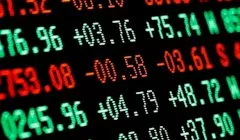Resources
How investors can trade to generate extra income - Part III
Promoted by City Index.
In the first two parts of this series published over the past fortnight, we discussed some of the challenges investors face to generate returns and passive income in the current environment of low interest rates.
How investors can trade to generate extra income - Part III
Promoted by City Index.
In the first two parts of this series published over the past fortnight, we discussed some of the challenges investors face to generate returns and passive income in the current environment of low interest rates.

One possible solution to supplement investment income is to make the transition from investing to trading. This week, we will discuss the most vital component of trading which is the use of Risk and Money Management within a Trading Plan.
To recap, traders aim to take advantage of the short-term price fluctuations that are mostly ignored by the investors who generally take a longer-term approach to markets. As a trader, the aim is to buy a security at a lower price and then to sell it at a higher price or by short selling which involves selling a security at a higher price and buying it back at a lower price.
The commonly quoted statistic is that 90% of new traders lose money. You may know or have heard of someone that’s “blown up” their trading account. It is not uncommon and when you think about the reasons that attract new traders to the market it includes:
1/ The ability to be our own boss

2/ Flexibility
3/ The ability to earn extra income
And therein lies the problem. A lot of new traders think only in terms of the money they can make from trading. Rarely, if ever do they think about how much they can lose. This contrasts with the approach of professional traders, who think about how much they can lose, every time they trade. Each trade is treated objectively, and they avoid becoming emotionally attached to any single trade.
To facilitate this mentality, professional traders follow a Trading Plan, much like the business plan you might have followed to achieve business goals and success in your chosen profession. It is logical then to apply the same discipline from your chosen profession into trading and this comes from having a Trading Plan. Like any good plan, a Trading Plan pre-determines what you are going to do before you have to do it. It is the difference between having control over the outcome or being controlled by the outcome.
A good Trade Plan includes rules for trade setups and entries, profit targets, stop losses, position sizing, as well as Risk and Money Management. The latter of which is probably the least understood and most commonly neglected by private traders and one of the key reasons attributed to the high failure rate of new traders.
Vital to Risk and Money Management is the use of stop losses. A stop loss protects a trader when the market doesn’t do as expected. It is important to remember losing trades are a part of trading and despite what you might hear on social media and on other forums, no single trader gets every trade right, it just doesn’t happen.
Because my trade entries are supported by Technical Analysis, it makes sense to exit a trade for technical reasons, hence the location of my stop loss will be at a point where the market has moved against me and the technical reason for the trade is gone. Also crucial is deciding in advance the amount of money I am willing to risk on any one trade.
As a guide, I aim to risk no more than 1% of my account value per trade. In theory, this means if I am trading a $10,000 account then $100 is the maximum I will lose if I am stopped out. While this may seem like a trivial amount, its very important to understand the context and mathematics behind this decision.
I hear of many new traders who might start with a trading account of $10,000 and who then decide to risk $1,000 per trade. What they don’t realise is, if they were to have a run of five losing trades in a row which is possible, it equates to a 50% drawdown. To get the trading account back to $10,000, requires a doubling of account equity or a 100% return just to recover!!!
As the quote below from famous trader Ed Seykota reminds us.

If you are interested in learning more about Technical Analysis and Risk Management, City Index offer trader development Technical Analysis courses, both foundational and advanced through TECHFX TRADERS. Visit www.cityindex.com.au/trading-courses/ or alternatively, contact the City Index New Accounts team on 1800 910 228 or email
TECH-FX TRADING PTY LTD (ACN 617 797 645) is an Authorised Representative (001255203) of JB Alpha Ltd (ABN 76 131 376 415) which holds an Australian Financial Services Licence (AFSL no. 327075)
Trading foreign exchange, futures and CFDs on margin carries a high level of risk and may not be suitable for all investors. The high degree of leverage can work against you as well as for you. Before deciding to invest in foreign exchange, futures or CFDs you should carefully consider your investment objectives, level of experience, and risk appetite. The possibility exists that you could sustain a loss in excess of your deposited funds and therefore you should not invest money that you cannot afford to lose. You should be aware of all the risks associated with foreign exchange, futures and CFD trading, and seek advice from an independent financial advisor if you have any doubts. It is important to note that past performance is not a reliable indicator of future performance.
Any advice provided is general advice only. It is important to note that:
- The advice has been prepared without taking into account the client’s objectives, financial situation or needs.
- The client should therefore consider the appropriateness of the advice, in light of their own objectives, financial situation or needs, before following the advice.
- If the advice relates to the acquisition or possible acquisition of a particular financial product, the client should obtain a copy of, and consider, the PDS for that product before making any decision.

Sponsored features
Dissecting the Complexities of Cash Indices Regulations: An In-Depth Analysis
Introduction In recent years, the world of finance has seen a surge of interest in cash indices trading as investors seek potential returns in various markets. This development has brought increased ...Read more

Sponsored features
The Best Ways to Find the Right Trading Platform
Promoted by Animus Webs Read more

Sponsored features
How the increase in SMSF members benefits business owners
Promoted by ThinkTank Read more

Sponsored features
Thinktank’s evolution in residential lending and inaugural RMBS transaction
Promoted by Thinktank When Thinktank, a specialist commercial and residential property lender, recently closed its first residential mortgage-backed securitisation (RMBS) issue for $500 million, it ...Read more

Sponsored features
Investors tap into cyber space to grow their wealth
Promoted by Citi Group Combined, our daily spending adds up to opportunities for investors on a global scale. Read more

Sponsored features
Ecommerce boom as world adjusts to pandemic driven trends
Promoted by Citi Group COVID-19 has accelerated the use of technologies that help keep us connected, creating a virtual supply chain and expanded digital universe for investors. Read more

Sponsored features
Industrial property – the silver lining in the retail cloud
Promoted by ThinkTank Read more

Sponsored features
Why the non-bank sector appeals to SMSFs
Promoted by Think Tank Read more

Sponsored features
Dissecting the Complexities of Cash Indices Regulations: An In-Depth Analysis
Introduction In recent years, the world of finance has seen a surge of interest in cash indices trading as investors seek potential returns in various markets. This development has brought increased ...Read more

Sponsored features
The Best Ways to Find the Right Trading Platform
Promoted by Animus Webs Read more

Sponsored features
How the increase in SMSF members benefits business owners
Promoted by ThinkTank Read more

Sponsored features
Thinktank’s evolution in residential lending and inaugural RMBS transaction
Promoted by Thinktank When Thinktank, a specialist commercial and residential property lender, recently closed its first residential mortgage-backed securitisation (RMBS) issue for $500 million, it ...Read more

Sponsored features
Investors tap into cyber space to grow their wealth
Promoted by Citi Group Combined, our daily spending adds up to opportunities for investors on a global scale. Read more

Sponsored features
Ecommerce boom as world adjusts to pandemic driven trends
Promoted by Citi Group COVID-19 has accelerated the use of technologies that help keep us connected, creating a virtual supply chain and expanded digital universe for investors. Read more

Sponsored features
Industrial property – the silver lining in the retail cloud
Promoted by ThinkTank Read more

Sponsored features
Why the non-bank sector appeals to SMSFs
Promoted by Think Tank Read more











